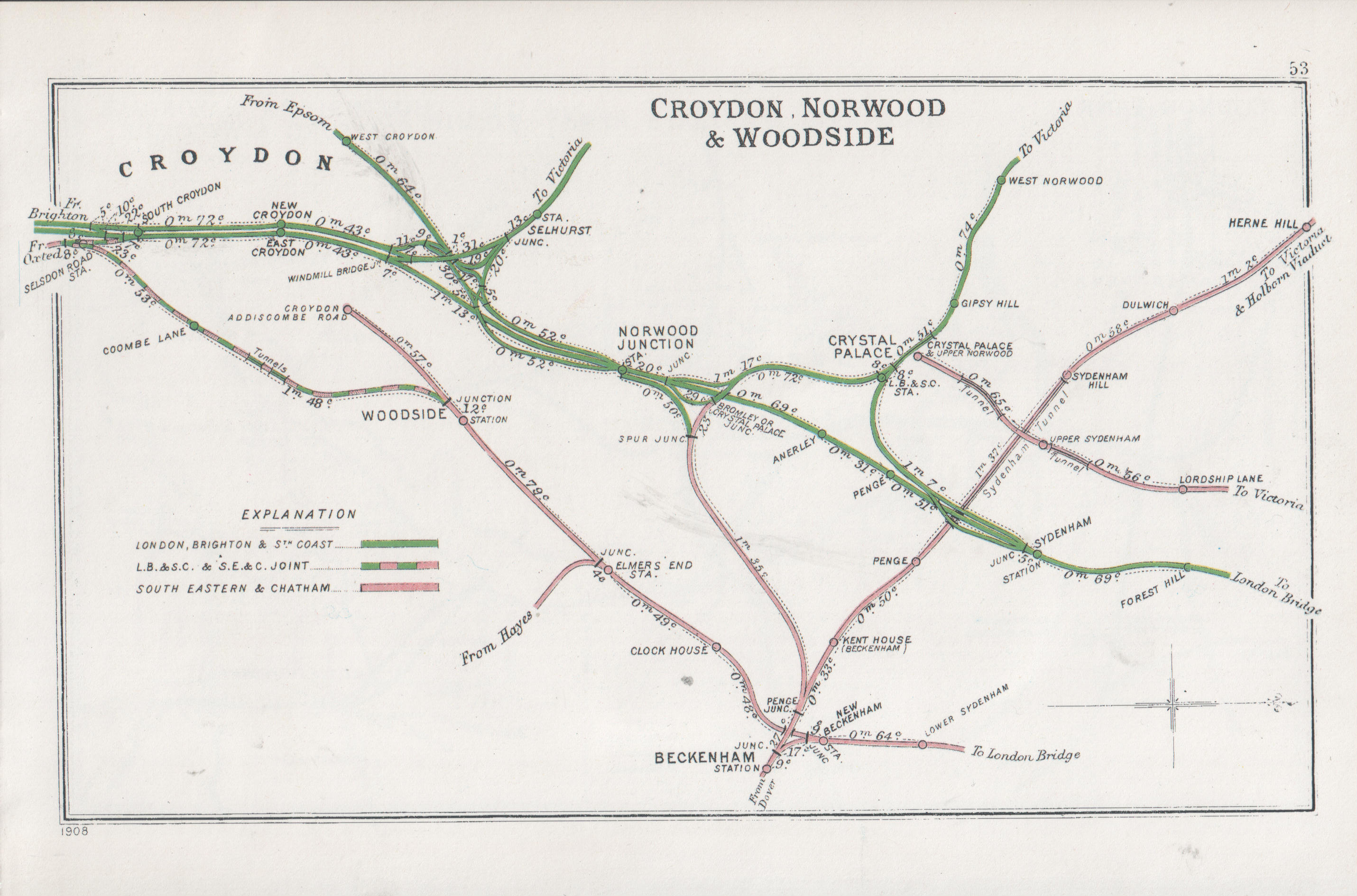Selsdon railway station on:
[Wikipedia]
[Google]
[Amazon]
Selsdon railway station was at the junction of the Croydon, Oxted and East Grinstead Railway and the now-closed Woodside and South Croydon Joint Railway. Opened in 1885 as "Selsdon Road" and it was from 
Disused Railways Page
{{coord, 51.3575, -0.0925, type:railwaystation_region:GB, display=title Railway stations in Great Britain opened in 1885 Railway stations in Great Britain closed in 1917 Railway stations in Great Britain opened in 1919 Railway stations in Great Britain closed in 1983 Disused railway stations in the London Borough of Croydon Former Woodside and South Croydon Joint Railway stations
Selsdon
Selsdon is an area in South-East London, England, located in the London Borough of Croydon, in the ceremonial county of Greater London. Prior to 1965 it was in the historic county of Surrey. It is located south of Coombe and Addiscombe, west ...
village.

History
It was jointly operated by the South Eastern Railway (SER) and theLondon, Brighton and South Coast Railway
The London, Brighton and South Coast Railway (LB&SCR; known also as the Brighton line, the Brighton Railway or the Brighton) was a railway company in the United Kingdom from 1846 to 1922. Its territory formed a rough triangle, with London at its ...
(LBSCR) prior to the grouping of railways. The four platforms (two for the Woodside line, two for the Oxted line) were respectively decked out in SER and LBSCR signage and fittings. A subway provided access to the Woodside platforms from the main station building. The station closed as a wartime economy measure on 1 January 1917. The Oxted platforms reopened on 1 May 1919, closing on 14 June 1959. At closure these platforms were used by only three trains a day.
The Woodside line was retained for occasional special services, and reopened with a regular passenger operation upon electrification of the line to Sanderstead
Sanderstead is a village and medieval-founded church parish at the southern end of Croydon in south London, England, within the London Borough of Croydon, and formerly in the historic county of Surrey, until 1965. It takes in Purley Downs and ...
on 30 September 1935. The name was also changed that day in an attempt to attract more passengers, who preferred to use the nearby South Croydon
South Croydon in south London is the area surrounding the valley south of central Croydon and running as far south as the former Red Deer public house on the Brighton Road. It is bounded by Waddon to the West and Selsdon and Sanderstead to the E ...
, which had a higher frequency of service.
Traffic was controlled by two signalbox
On a rail transport system, signalling control is the process by which control is exercised over train movements by way of railway signals and block systems to ensure that trains operate safely, over the correct route and to the proper timetab ...
es: "Selsdon North" for the Woodside line, with the up line used for reversing some trains; and "Selsdon South" ("Selsdon" after 1935) for the Oxted line. The north box closed on 22 September 1935 following a signalling reorganisation. The south box, with 22 levers, remained in use until 1 April 1984. From 1934 and for many years thereafter, a trailing crossover and a private siding from the up line served a roofing company south of the junction, which received its raw materials by rail.
A goods yard with cattle pens and a chalk pit opened shortly after the station and in 1894 the Anglo-American Oil Company installed oil tanks. The station closed to general freight on 7 October 1968,Chronology of London Railways by H.V.Borley page 80 but the oil tanks remained in use until 1993, accessed from the remnant of the Woodside line to the footbridge, just north of the site of .
Selsdon saw its last passenger train on 13 May 1983 as the Woodside line officially closed three days later. It was the last gas-lit station in London. The station buildings were demolished in the 1960s, leaving a short section of canopy over the subways, and a small wooden hut was erected from where tickets were issued, although latterly this was seldom staffed.
Nowadays some remains of the Oxted platforms and the down Woodside platform are still visible. The heavily overgrown track to the former goods yard and oil storage facility can be seen from Dornton Road footbridge. A building warehouse occupies the up Woodside platform and the main station buildings.
References
External links
Disused Railways Page
{{coord, 51.3575, -0.0925, type:railwaystation_region:GB, display=title Railway stations in Great Britain opened in 1885 Railway stations in Great Britain closed in 1917 Railway stations in Great Britain opened in 1919 Railway stations in Great Britain closed in 1983 Disused railway stations in the London Borough of Croydon Former Woodside and South Croydon Joint Railway stations